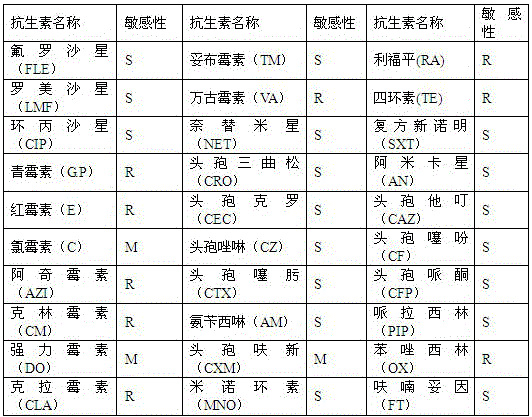Escherichia coli JLTrp and application thereof to fermentation production of L-tryptophan
A technology of Escherichia coli and tryptophan, applied in the direction of fermentation, microbial-based methods, bacteria, etc., can solve the problems of high raw material and energy consumption, low conversion rate, strain variation, etc., and achieve strain stability Improvement, vitality improvement, and the effect of reducing the production of organic acids
- Summary
- Abstract
- Description
- Claims
- Application Information
AI Technical Summary
Problems solved by technology
Method used
Image
Examples
Embodiment 1
[0022] A strain of Escherichia coli JLTrp, which is classified as Escherichia coli, has been preserved in the General Microorganism Center (CGMCC) of the China Committee for Microbial Culture Collection (CGMCC), and the strain preservation number is CGMCC NO.7.217. The deposit date is May 8, 2016.
[0023] The application of the Escherichia coli JLTrp in the production of L-tryptophan by fermentation comprises the following steps:
[0024] Step 1. Cultivate mature strains: first sterilize the empty tank of the seed culture tank, add liquid seed medium to the seed culture tank and then sterilize the solid tank; cool down after the solid tank is sterilized; prepare for inoculation Bacterial liquid, then inoculated, and mature strains were obtained after culturing under the following conditions: culture temperature 34°C, pH 6.8, dissolved oxygen > 25%, pressure 0.03MPa, air volume 0.3VVM;
[0025] Step 2. Fermentation tank cultivation: first carry out empty tank sterilization to...
Embodiment 2
[0030] The application of the Escherichia coli JLTrp in the production of L-tryptophan by fermentation comprises the following steps:
[0031] Step 1. Cultivate mature strains: first sterilize the empty tank of the seed culture tank, add liquid seed medium to the seed culture tank and then sterilize the solid tank; cool down after the solid tank is sterilized; prepare for inoculation Bacterial liquid, then inoculated, and mature strains were obtained after culturing under the following conditions: culture temperature 35°C, pH 7.0, dissolved oxygen > 25%, pressure 0.03-0.08MPa, air volume 1.5VVM;
[0032] Step 2. Fermentation tank cultivation: first carry out empty tank sterilization to the fermenter tank, add liquid fermentation medium to the fermenter tank, and then carry out solid tank sterilization; after the solid tank sterilization is completed, cool down, and then mature the fermenter obtained in step 1 The strains were inoculated into the fermenter, and cultured under t...
Embodiment 3
[0040] The application of the Escherichia coli JLTrp in the production of L-tryptophan by fermentation comprises the following steps:
[0041] Step 1. Cultivate mature strains: first sterilize the empty tank of the seed culture tank, add liquid seed medium to the seed culture tank and then sterilize the solid tank; cool down after the solid tank is sterilized; prepare for inoculation Bacterial liquid, then inoculated, and mature strains were obtained after culturing under the following conditions: culture temperature 36°C, pH 7.2, dissolved oxygen 38%, pressure 0.08MPa, air volume 2.0VVM;
[0042] Step 2. Fermentation tank cultivation: first carry out empty tank sterilization to the fermenter tank, add liquid fermentation medium to the fermenter tank, and then carry out solid tank sterilization; after the solid tank sterilization is completed, cool down, and then mature the fermenter obtained in step 1 The bacteria were inoculated into the fermenter, and cultured under the fol...
PUM
 Login to View More
Login to View More Abstract
Description
Claims
Application Information
 Login to View More
Login to View More - Generate Ideas
- Intellectual Property
- Life Sciences
- Materials
- Tech Scout
- Unparalleled Data Quality
- Higher Quality Content
- 60% Fewer Hallucinations
Browse by: Latest US Patents, China's latest patents, Technical Efficacy Thesaurus, Application Domain, Technology Topic, Popular Technical Reports.
© 2025 PatSnap. All rights reserved.Legal|Privacy policy|Modern Slavery Act Transparency Statement|Sitemap|About US| Contact US: help@patsnap.com


